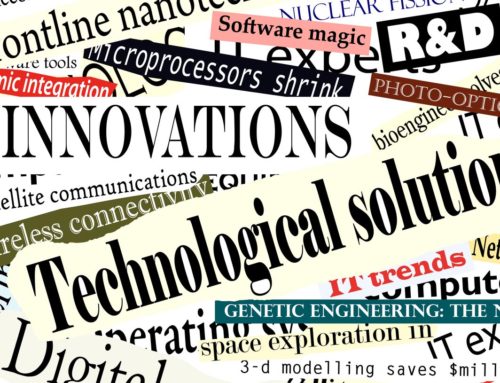Building your communication
strategy
“Rome wasn’t built in a day.” Any large-scale project calls for good preparation and methodology. The same is true for communication. Building a communication strategy demands that you analyse your environment in order to make informed choices. How? By following the 5 steps presented by Alexia Youknovsky, our CEO. She explained this approach during a webinar organized by the Marie Curie Alumni Association to which she was invited with James Bowers, the editor-in-chief of Polytechnique Insights.

Five questions. That is the starting point of your communication strategy. They are the 5W, the well-known pronouns used by journalists when they write an article: Why, Who, What, Where, When. By answering these questions, you will find the answers that you need to build your strategy.
1. Why
Why do you communicate? What is your aim? These fundamental questions are vital to build your strategy. Often, when you ask these questions to experts, the first answer that comes to their mind is “to inform”. Yet in fact, their objective is broader and more ambitious. Indeed, for scientists, science communication meets different objectives: increasing visibility, getting funding, developing partnerships, giving reassurance on an unknown or misunderstood technology, informing others on your skill sets, etc. To answer these objectives, you must inspire trust, create a connection with your audience, tell inspiring stories, convey emotion, etc. Or simply make yourself known from your target audience. In other words, you must become visible!
2. Who
Now that you have defined your objective, it is time to pay attention to your target audience. Will you communicate internally or externally? If your communication is for internal purposes, do you wish to impact managers, colleagues, both? On the contrary, if your intent is to communicate externally, are you targeting peers, journalists, funders, or the general public? This is a crucial step because the target audience will serve as a stepping stone to answer the next questions: What? Where? And When?
3. What
Communicating without sending a clear message, is a bit like rambling! That is why it is better to reflect on the message you wish to convey beforehand. To that end, rely on the target audience you defined previously. How much do they know about the topic you will communicate about? How do you want them to respond? Once you have established your expectations and that of your target audience, you can build your message. Try to sum up in a few lines the ideas you want to share.
The name of your project, of your product or your entity is a vital component of your image. When you are expecting a child, you do not pick the name randomly. It requires careful consideration, in addition to how you feel about it, many criteria are considered: its originality, how it sounds, its meaning, your family history, etc. It is the same for the name of your project. Take the time to think it through. Ideally, you should pick a name which has meaning, which refers to your project. Because it will contribute to its image. Therefore, avoid using an acronym. Much like other identity items (corporate identity and style guide, logo, slogan), the name of your project helps to convey your message. For example, if you want your innovation to be seen as reliable, innovating and sustainable, pick a name accordingly. In short, create a brand for your project!
4. Where
Which means should you use to communicate? This is the underlying question implied by “where”. Scientific events, brochures or media relations: there are multiple communication channels! Instead of trying to use all of them and wearing yourself down, you should focus on the ones which are adapted to your objective. A website if often indispensable, whatever the target audience. A scientific congress, however, is only intended for a targeted population, your peers. As for social media, pick those that your targets are likely to use. For example, TikTok is mainly intended for adolescents whereas LinkedIn is for professionals.
5. When
You have now determined your objectives, your target audience, your message and your communication mediums. You have almost reached your goal! Last but not least, there is a final step to consider: you need to define your communication frequency. For a research project, you must at the very least communicate during the important stages of development. Meaning when you have achieved significant results: a prototype, for example. In addition, our advice is to communicate on an ongoing basis. You can regularly publish on social media, send newsletters every month or write blog articles.
Nevertheless, things don’t always go as planned. External factors can interfere with your well-planned communication strategy. A crisis can compel you to communicate in unexpected ways: for example, important floods in Western Europe during summer, wildfires like those in Australia, or a global health crisis like the COVID-19 pandemic. In these times of crisis, you might be urged to communicate because you are directly impacted by the consequences, or because you are an expert on the topic related to this crisis. This communication is occasional, is limited in time, and is linked to a particular context. It should therefore be built differently from your usual communication strategy. Crisis communication is planned ahead, wherever possible, in order to respond in a timely manner and to avoid being caught off guard when the time comes.
Why? Who? What? Where? When? These are the five questions you need to keep in mind to analyse your environment and to make the right decisions for your communication strategy. These will allow you to define your needs, your target audience, your message, your communication channels and your communication frequency. In other words, to gather everything you need to build your communication strategy!
You would like to find out more about this subject? You can get all the advice of Alexia Youknovsky and James Bowers, the authors of SELL YOUR RESEARCH: Public Speaking for Scientists, by watching the 1-hour video of the Marie Curie Alumni Association webinar.
> Science communication
15/03/2022








